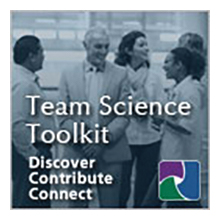- Home
- About
- Membership
- Special Interest Groups
- Past SciTS Conferences
- 2024 SciTS Conference
- 2023 Scits Conference
- 2022 SciTS Conference
- 2021 SciTS Conference
- 2020 SciTS Conference
- 2019 SciTS Conference
- 2018 SciTS Conference
- 2017 SciTS Conference
- 2016 SciTS Conference
- 2015 SciTS Conference
- 2014 SciTS Conference
- 2013 SciTS Conference
- 2012 SciTS Conference
- 2011 SciTS Conference
- 2010 SciTS Conference
- Past SciTS Conference Photos
- Contact Us
The Resilience of Team Science: Lessons for the Science of Team Science from Puerto Rico’s Post Hurricane Maria Response, Recovery and ReconstructionDr. Cecilio Ortiz Garcia, University of Puerto Rico~Mayaguez; Dr. Marla Perez Lugo, University of Puerto Rico~Mayaguez; Dr. Lionel Orama Exclusa, University of Puerto Rico~Mayaguez; Mr. Jacob Mans, University of MinnesotaThere is consensus on the multidimensional uniqueness of Hurricane Maria’s level of destructive impact on the Puerto Rican archipelago. The Maria blackout is now considered the longest in U.S. history. A George Washington University Report states that more than 2,975 deaths could be attributed to Hurricane Maria. Ultimately, FEMA describes the Hurricane Maria as “the largest operation in the history of the agency”. Years before the storm however, The University of Puerto Rico developed a powerful resiliency tool for the archipelago. The National Institute of Energy and Island Sustainability, is a collaborative convergence platform that brings together over 90 resources in energy and sustainability among the eleven campuses of the UPR system. This Team Science initiative, became the only convergence platform capable of providing expertise necessary in the reconstruction of the island’s electric grid. Alternatively, a National Science Foundation Critical Resilient Infrastructure Systems and Processes (CRISP) Grant had been awarded to the UPR years before the Hurricane. The CRISP program studies the resilience of structurally critical, yet highly interdependent infrastructure systems and processes. As the quintessential Science of Team Science effort, the project brought together 9 researchers from psychology to electrical engineering, political science to climate science and radars, from environmental sociology to computer science. In the case of this grant the object of study was Puerto Rico’s electric grid. Before Maria arrived in Puerto Rico, the Puerto Rican media had flagged this grant as a possible answer to Puerto Ricco’s energy problems! Finally, a valuable lesson was also learned from Maria: the need for innovation in the way universities see themselves as intervenors in emergency management processes and practices. From disjointed, fragmented, competitors, we should be moving towards more heterarchical, polycentric, collaborative inter university platforms. Again, utilizing the Science of Team Science, the Resiliency through Innovation in Sustainable Energy Platform was created, to transfer the knowledge, technologies and science developed after the hurricane under a new ethic of equity and justice by universities which themselves might be hit with a catastrophic event in the future. This panel proposes to introduce, analyze and compare these 3 major team science efforts dealing with energy and sustainability issues in Puerto Rico, assess their performance before and after Hurricane Maria in effectively improving the resiliency of communities in Puerto Rico and ultimately help answer the question: what is the relationship between resilience and team science? How well do Team Science Efforts respond to the impacts of Catastrophic Climatic Events? How can the Science of Team Science enhance the resiliency of these efforts and in turn, the resiliency of the communities engaged in these efforts? Panelists: Dr. Cecilio Ortiz Garcia, Dr. Marla Perez Lugo, Dr. Lionel Orama Exclusa; Discussant: Jacob Mans, AIA |

